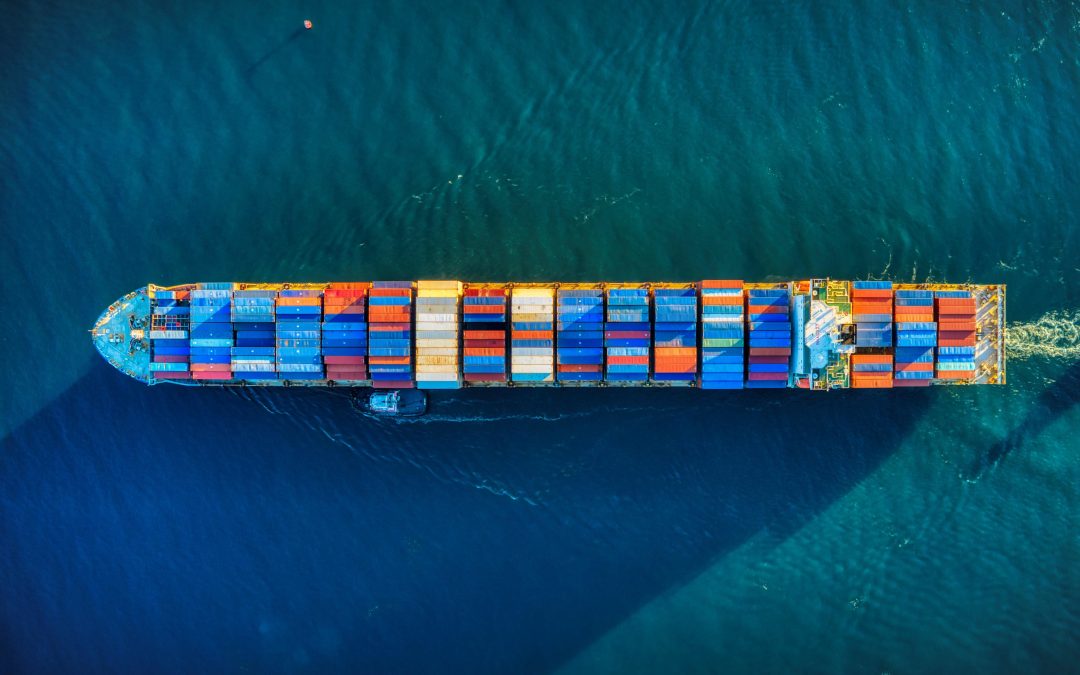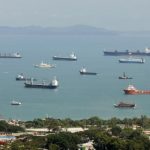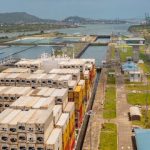Ahead of this week’s International Maritime Organization’s Intersessional Working Group on Reduction of GHG Emissions from Ships (IMO, IWSG-GHG-17, September 23-17) and next week’s Marine Environment Protection Committee meeting (MEPC 82, September 30-October 4), the Clean Shipping Coalition today demanded that the IMO meet its own GHG Strategy targets by urgently taking action in three key areas regarding fuel and emissions for global shipping.
These two IMO gatherings will be the first time that all three critical elements of the IMO’s implementation of its GHG Strategy – the Carbon Intensity Indicator (CII) revision, Global Fuel Standard (GFS) and a greenhouse gas (GHG) levy will be on the table at the same meeting.
These two weeks present a unique moment for the IMO to demonstrate that it is serious about meeting its own new IMO GHG Strategy targets – which means taking action on all three of these fronts”, said Clean Shipping Coalition President Delaine McCullough. “In 2023, the IMO committed to eliminating global shipping’s climate pollution by 2050, with crucial emission-reduction targets for 2030 and 2040 – these next two weeks provide pivotal opportunities for IMO Member States to design and adopt the binding policies to ensure those targets are met.”
“Such policies will ensure the shipping sector maximises energy efficiency to immediately cut emissions, drive the uptake of onboard wind and solar propulsion and investment in scalable zero-emission fuels, and guarantee an equitable and just transition to zero-emission shipping”, said McCullough. “There’s no time to waste on false solutions—the IMO member states must adopt a comprehensive and fully integrated set of efficiency, fuel and energy emission standards, and carbon pricing policies.”
NGOs are also calling for the IMO to recognise the need to elevate other crucial issues, such as risks to biodiversity and pollution from shipping:
“Over the next fortnight, the IMO must put biodiversity and pollution threats on the same footing as its response to the climate crisis”, said Andrew Dumbrille, Director of Equal Routes. “A healthy, diverse ocean plays a vital role in tackling climate change. The ocean has the ability to soak up 31% of global CO2 emissions and produces half of the planet’s oxygen. A high level and well-coordinated task force, similar to IMO’s Maritime Just Transition Task Force, should be agreed at MEPC 82 to prioritise solutions with co-benefits which address the triple planetary crisis of climate change, biodiversity loss and increased pollution.”
Carbon Intensity Indicator
“The revision of the Carbon Intensity Indicator (CII) should take place without delay, that is, by 2026, to ensure the CII can make the necessary contribution to reaching the 2030 IMO GHG Strategy targets”, said McCullough. “This revision should maximise the operational efficiency of ships now, and in the future, to drive down fuel-burn for the long-term, and actively favour the primary use of wind and solar for ship propulsion”. (See background below)
Global Fuel Standard
“To complete the energy transition, the IMO should ensure that any fuel standard drives the use of wind and new fuels that are genuinely zero-emission, safe, scalable and sustainable”, said Constance Dijkstra, IMO Policy Manager at Transport & Environment. “We should avoid at all costs a measure that will encourage the use of biofuels, which are not scalable and would delay investments in true solutions.”
Greenhouse Gas Levy
“Recent analyses of the impact of the various carbon pricing measures on the table show that a universal levy on all shipping’s life-cycle GHG emissions is the simplest and most cost-effective way to deliver the transition to zero-emission shipping”, said Bastien Bonnet-Catalloube, Expert on decarbonisation of aviation and shipping, Carbon Market Watch. “A levy of $150/ton of GHG emissions, as proposed by a group of Pacific Island and Caribbean states, would disencourage the consumption of polluting fuels and generate revenues that can ensure that shipping’s climate transition is just and equitable. It would also reinforce the CII and the GFS, by driving early investments in energy efficiency and wind technologies and spur the development and deployment of zero-emission fuels”.
Background: About the Carbon Intensity Indicator
Developed as an integral component of a set of IMO policies intended to drive greater energy efficiency of ships, the Carbon Intensity Indicator (CII) entered into force on 1st November 2022 and applies from the 1st January 2023 to all ships covered by the IMO Data Collection System.
The IMO’s revised Carbon Intensity Indicator (CII) will be central to the IMO’s ability to drive emission reductions on a pathway that meets the targets contained in its revised greenhouse gas (GHG Strategy) which commits the shipping industry to decarbonise by 2050 and aims to cut emissions by 30% by 2030 and 80% by 2040. The new GHG Strategy also contains a commitment to ensure a 5-10% uptake of zero emission fuels/energy sources by 2030.
As warming has already reached approximately 1.2C, early emissions reductions are especially important to avoid breaching the 1.5C threshold and to avoid triggering climate tipping points. Even assuming that a maximum of 10% new near-zero and zero-emission fuels are available by 2030 there remains a very significant “emissions gap” that must be filled by improvements in ship energy efficiency driven by the Carbon Intensity Indicator – and there is no other measure on the table that can do this.
If the IMO and international shipping are to meet their climate obligations and at least achieve the emissions reductions called for in the revised GHG Strategy then a number of changes will need to be made to the CII. Perhaps most important, after raising the levels of ambition (the energy efficiency improvement requirements), is ensuring that the targeted emission reductions are reliable and real. The current “soft” enforcement will need to be replaced with a more traditional approach that has real consequences for failing to comply.
According to a paper submitted to MEPC 81 by the Clean Shipping Coalition, Pacific Environment and WWF, the “revision of the CII, which is due to start at MEPC82 (September 30 – October 4th) and conclude before the end of 2025, is a key opportunity to bring it up to date with the revised GHG Strategy and to make sure that it works in the future in a coherent way with the contents of the basket of mid-term measures being negotiated at the same time.
With the absence of any firm enforcement mechanism and with annual energy efficiency improvement requirements that are little better than ‘business as usual’ it is perhaps understandable that some have referred to this first period of CII as an ‘experience building phase’. But this phase must come to an end, and from 2027 the CII must be in a position to play a major role, alongside the proposed goal-based fuel standard (GFS) and other mid-term measures, in driving the urgently needed ship climate emission reductions.”
The co-benefits of using wind-powered and slower ships include reduced underwater radiated noise and whale strikes which leads to healthier whale and other ocean wildlife populations that can contribute to the ocean’s ability to sequester carbon. As the paper states “as the recent Organization’s workshop on the relationship between energy efficiency and underwater radiated noise (URN) clearly illustrated, ships that operate more efficiently, with the objective of reducing GHG emissions, are also quieter and less likely to disturb whales and other ocean wildlife. When ships slow down, they are also less likely to collide with and kill/injure whales and other ocean wildlife and are, generally, less polluting. This is the other largely unacknowledged aspect of shipping’s climate impact: ship operations are routinely and relentlessly undermining global ocean health and hindering the ocean’s ability to help us mitigate global heating. Healthy ocean ecosystems are needed to win the fight against global heating, and for that, a general lowering of shipping’s environmental impact is needed, not just for it to reduce its GHG emissions, as important as that is.”
Source: The Clean Shipping Coalition






